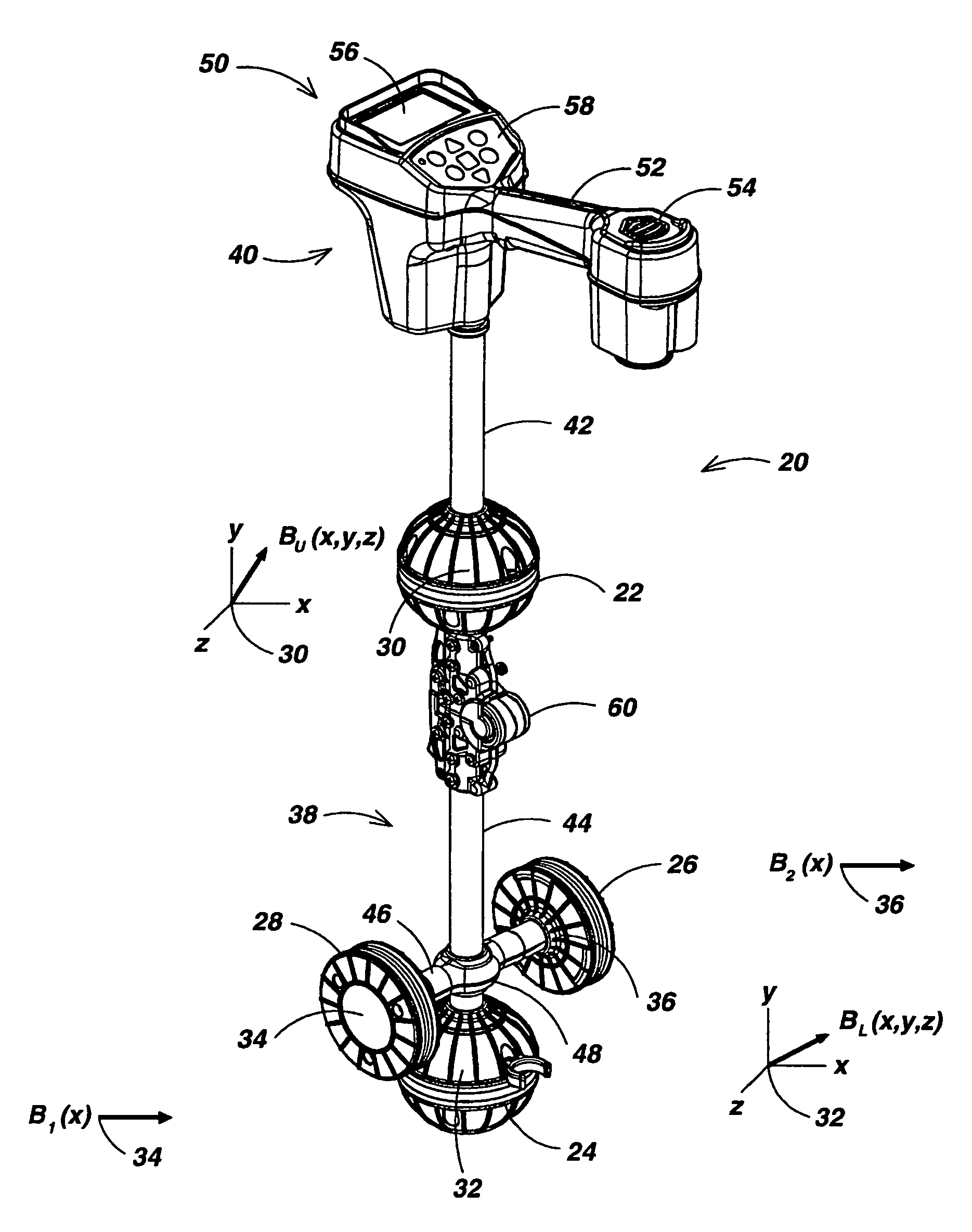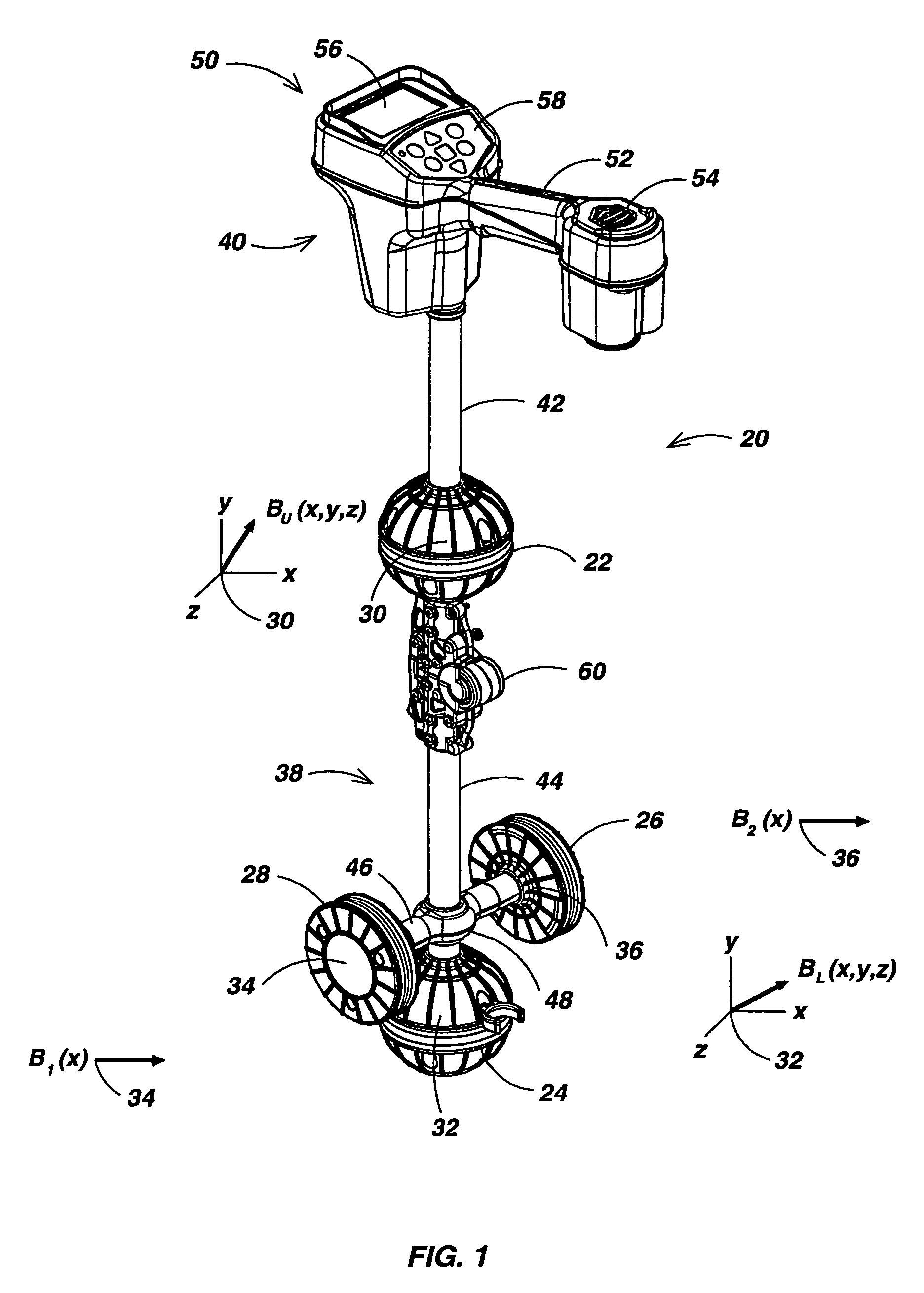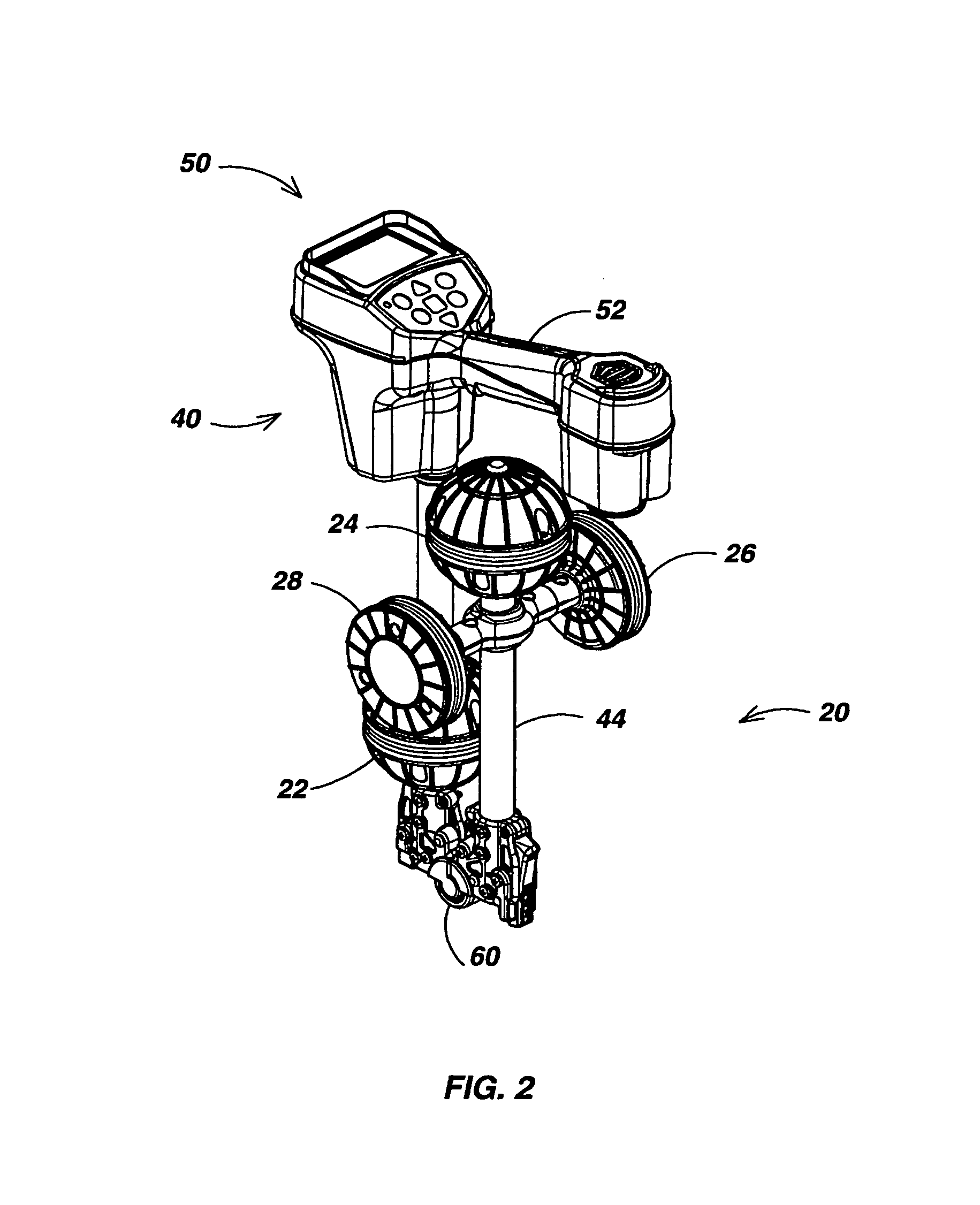Locator with apparent depth indication
a technology of apparent depth and locator, which is applied in the direction of detecting objects using electromagnetic waves, using reradiation, instruments, etc., can solve the problems of affecting the comfort and convenience of residents, and affecting the accuracy of locating and tracing. the effect of reliable horizontal field asymmetry measurements, improved user interface integration, and improved accuracy
- Summary
- Abstract
- Description
- Claims
- Application Information
AI Technical Summary
Benefits of technology
Problems solved by technology
Method used
Image
Examples
embodiment 62
[0047]FIG. 3 is a perspective view illustrating an alternative 3D tripod embodiment 62 of the locator system of this invention shown in an operational configuration. Locator system 62 includes a first pair of electromagnetic sensor arrays 64 and 66 that are vertically spaced apart from one another and a second triplet of electromagnetic sensor arrays 68, 70 and 72 that are spaced apart from one another and disposed in a plane below sensor arrays 64 and 66 that may be substantially horizontal during operation. Sensor arrays 64-72 each preferably include three individual sensor elements (not shown) each having a sensor axis disposed in a mutually orthogonal arrangement that facilitates the detection of the 3D electromagnetic field vector BU(x,y,z) at the upper array centroid 74, the 3D electromagnetic field vector BL(x,y,z) at the lower array centroid 76, and the 3D electromagnetic field vectors B1(x,y,z), B2(x,y,z) and B3(x,y,z) at the respective coplanar array centroids 78, 80 and 8...
embodiment 126
[0060]The system of this invention includes several user signal schemes adapted for improved human factors in the communication of events to the user. One of these is a digital “proximity” numeral that is revalued inversely to changes in virtual depth 118. The line 122 in FIG. 8D illustrates exemplary values for the digital proximity numeral, which is illustrated as the proximity numeral display 124 in the exemplary Graphical User Interface (GUI) display embodiment 126 of FIG. 9. Another user signal scheme is the true line current display 125 (FIG. 9), which is presented only when the locator system is disposed directly above the utility line target. Yet another such user signal scheme of this invention is the auditory signal represented by the line 128 in FIG. 8F, which has a frequency that is varies monotonically with the inverse of virtual depth 118 above some predetermined threshold and is otherwise not present. An important feature of the signal frequency represented by line 12...
exemplary embodiment 190
[0066]FIG. 13 is a block diagram illustrating an exemplary embodiment 190 of the locator system of this invention. Locator system 190 may also include, for example, sensor assembly 159 with the associated signal conditioning elements (not shown) to provide a plurality K of time-varying analog sensor signals {Sk(t)} at signal bus 160. A / D converter 162 converts signals 160 into digital data 164 representing the sensor signals {Sk(t)}, which are transferred into the processor 192 through the serial port 194. In processor 192, the digital sensor signals {Sk(t)} are passed through a plurality of band-pass filters exemplified by the filters 196 and the low-pass filter 198, which segregates the zero and low frequency components 200 into a separate filter channel for use in detecting ferromagnetic fields modulated by user motion. The plurality of passband signals 202 and the user-motion modulation signal 200 are next transferred to the cross-correlator 204 for the multiplexed extraction of...
PUM
 Login to View More
Login to View More Abstract
Description
Claims
Application Information
 Login to View More
Login to View More - R&D
- Intellectual Property
- Life Sciences
- Materials
- Tech Scout
- Unparalleled Data Quality
- Higher Quality Content
- 60% Fewer Hallucinations
Browse by: Latest US Patents, China's latest patents, Technical Efficacy Thesaurus, Application Domain, Technology Topic, Popular Technical Reports.
© 2025 PatSnap. All rights reserved.Legal|Privacy policy|Modern Slavery Act Transparency Statement|Sitemap|About US| Contact US: help@patsnap.com



